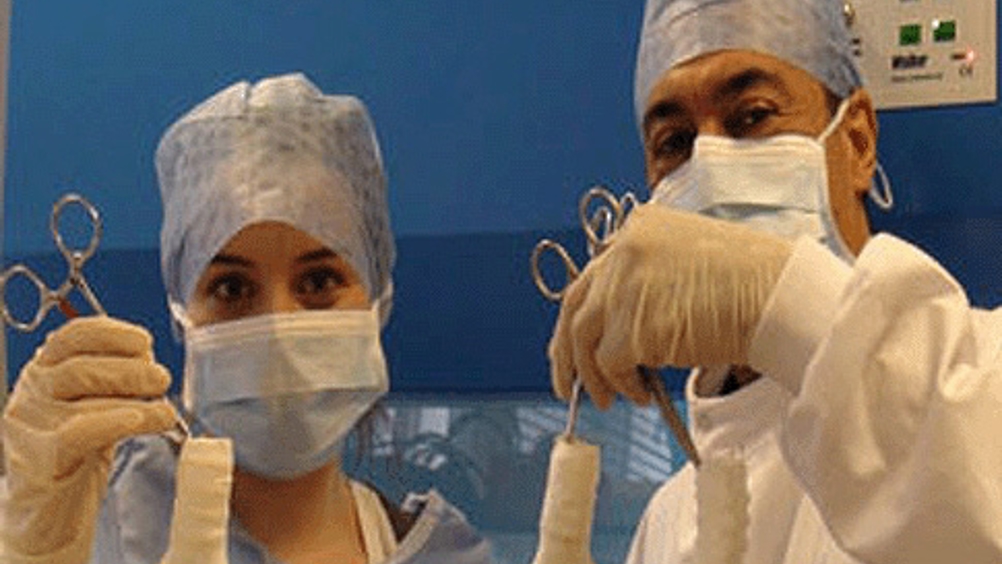First implant of polymer-scaffold trachea is sucessful
A team at University College London has designed and fabricated the polymer scaffold that was recently used in the first fully engineered trachea transplant.

The trachea — which is made up of around 70 per cent of UCL’s novel polymer and 30 per cent of stem cells from the patient’s own bone marrow — has been completely accepted by the patient’s immune system.
‘They put a camera inside after six days and the cells had grown really nicely — you wouldn’t see a difference between a native trachea and ours,’ said Prof Alex Seifalian of UCL, who worked alongside transplant surgeons at the Karolinska University Hospital in Stockholm.
Previous attempts at trachea transplants have shown limited success. In those procedures, a donated trachea was used and the cells stripped away to leave the underlying collagen scaffold. The scaffold was then seeded with the recipient’s own stem cells and transplanted.
‘Mechanically, it’s simply not strong enough. Some of them just collapse and get holes through them, so you get patients coming back for repeat procedures,’ Seifalian said.
Register now to continue reading
Thanks for visiting The Engineer. You’ve now reached your monthly limit of news stories. Register for free to unlock unlimited access to all of our news coverage, as well as premium content including opinion, in-depth features and special reports.
Benefits of registering
-
In-depth insights and coverage of key emerging trends
-
Unrestricted access to special reports throughout the year
-
Daily technology news delivered straight to your inbox










Water Sector Talent Exodus Could Cripple The Sector
Maybe if things are essential for the running of a country and we want to pay a fair price we should be running these utilities on a not for profit...